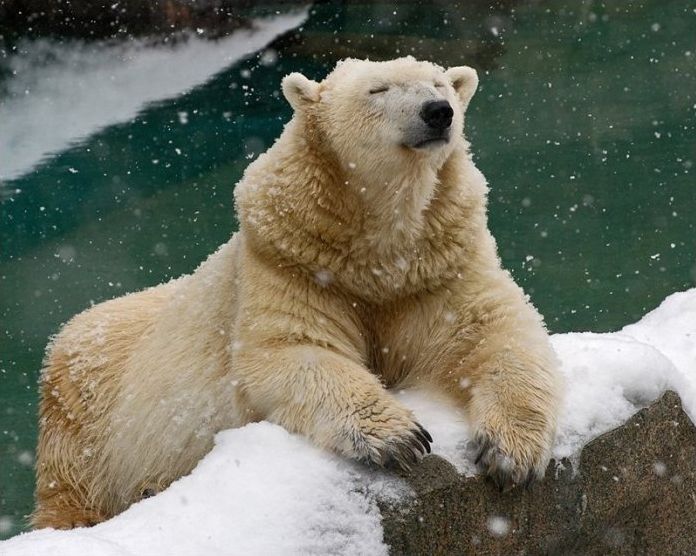|
|
Polar Bear Photography
|
The polar bear is found in the Arctic Circle and adjacent land masses. Due to the absence of human development in its remote habitat, it retains more of its original range than any other extant carnivore. While they are rare north of 88°, there is evidence that they range all the way across the Arctic, and as far south as James Bay in Canada. They can occasionally drift widely with the sea ice, and there have been anecdotal sightings as far south as Berlevåg on the Norwegian mainland and the Kuril Islands in the Sea of Okhotsk. It is difficult to estimate a global population of polar bears as much of the range has been poorly studied, however biologists use a working estimate of about 20,000–25,000 polar bears worldwide.
There are 19 generally recognized discrete subpopulations. The subpopulations display seasonal fidelity to particular areas, but DNA studies show that they are not reproductively isolated. The thirteen North American subpopulations range from the Beaufort Sea south to Hudson Bay and east to Baffin Bay in western Greenland and account for about 70% of the global population. The Eurasian population is broken up into the eastern Greenland, Barents Sea, Kara Sea, Laptev Sea, and Chukchi Sea subpopulations, though there is considerable uncertainty about the structure of these populations due to limited mark and recapture data.
The range includes the territory of five nations: Denmark (Greenland), Norway (Svalbard), Russia, the United States (Alaska) and Canada. These five nations are the signatories of the 1973 International Agreement for the Conservation of Polar Bears, which mandates cooperation on research and conservations efforts throughout the polar bear's range.
Modern methods of tracking polar bear populations have been implemented only since the mid-1980s, and are expensive to perform consistently over a large area. The most accurate counts require flying a helicopter in the Arctic climate to find polar bears, shooting a tranquilizer dart at the bear to sedate it, and then tagging the bear. In Nunavut, some Inuit have reported increases in bear sightings around human settlements in recent years, leading to a belief that populations are increasing. Scientists have responded by noting that hungry bears may be congregating around human settlements, leading to the illusion that populations are higher than they actually are. The Polar Bear Specialist Group of the IUCN takes the position that "estimates of subpopulation size or sustainable harvest levels should not be made solely on the basis of traditional ecological knowledge without supporting scientific studies."
|
|









